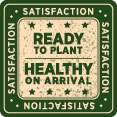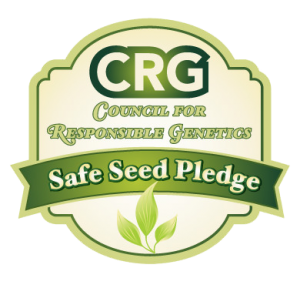When should I plant?

The Best Time to Plant Is Not The Same for Everyone
 Each person has to decide at what point their garden is ready for certain types of herb and vegetable plants. Creating a planting calendar will help you plan correctly from sew to harvest. Perennial Herbs can be planted just about anytime it is beginning to get warm but Annual herbs such as Basil and Dill need to wait until night temperatures are well above freezing every night. Tomatoes and other “warm season” vegetables are frost tender and will be severely damaged by even a light frost, which can happen when temperatures are as low as 36-38 degrees. “Cool season” vegetables like lettuce and broccoli like a bit of frost but a hard freeze can cause damage.
Each person has to decide at what point their garden is ready for certain types of herb and vegetable plants. Creating a planting calendar will help you plan correctly from sew to harvest. Perennial Herbs can be planted just about anytime it is beginning to get warm but Annual herbs such as Basil and Dill need to wait until night temperatures are well above freezing every night. Tomatoes and other “warm season” vegetables are frost tender and will be severely damaged by even a light frost, which can happen when temperatures are as low as 36-38 degrees. “Cool season” vegetables like lettuce and broccoli like a bit of frost but a hard freeze can cause damage.
Fortunately we are not alone in this endeavor to find the perfect date to plant. We have many tools to help us decide when spring has arrived and it is safe to set out our vegetables. Keep in mind that there is no “perfect” planting date although there are some that swear that planting by the moon is the way to go. The USDA recently released a new Plant Hardiness Map, adjusting Planting Zones for the country. There are many resources for these updates on their website, click here to go to the official page.
You generally have a window of several weeks and sometimes even longer depending upon your climate zone. If you don’t like running out at night to cover up your plants with sheets because of a late frost warning then add about a week or two to the dates we recommend.
Determining your Average Last Frost Date
The first thing we need to do is determine when the average last frost date will be in your city. These dates are based upon NOAA climate maps and indicate the likely last frost date for your area plus add few days just to be safe. These are recommended shipping dates but not exact planting dates as that can vary depending upon the weather in your area.
Garden Conditions For Planting Make a Difference
You need to determine whether or not your soil has dried out enough to dig up the soil for loosening and adding compost. If you pick up a handful of soil and squeeze it between your fingers and it feels muddy and very moist, wait a week or so of sunshine before digging. If it feels soft and moist, but not wet, it is ready to be worked.
Lastly, you need to make sure no cold weather is on the horizon. Many times a last minute frost has ruined lots of hard work and planting by killing off tender seedlings. Better to wait a week or two than plant too early and there are many weather tools on the web that will help you see into the future.
When you finish your order, we will assign specific shipping dates to your order based upon the average last frost date for your area, however this is the very earliest date, not the only date, you should plant.
Our plants are seeded on a regular schedule throughout the season so they are always the right size for you, no matter when you need to plant.
We Do Not Recommend Planting Right Away
We do not recommend planting your tomatoes and vegetables right away after you receive them. A couple of days to acclimate and be out of the box is very important. Also always check local weather reports for late frosts which can cause severe damage to young plants. Check the maps below to determine the best time to plant in your area.
Average Last Frost Date In Spring

Average First Frost Date In Fall

In order to determine the best planting time for your area, find out when your average first frost date will be and then count backwards for the maturity dates of Freeze Tender plants. Keep in mind that most greens and Lettuces will tolerate light freezes and some can grow all winter long.



